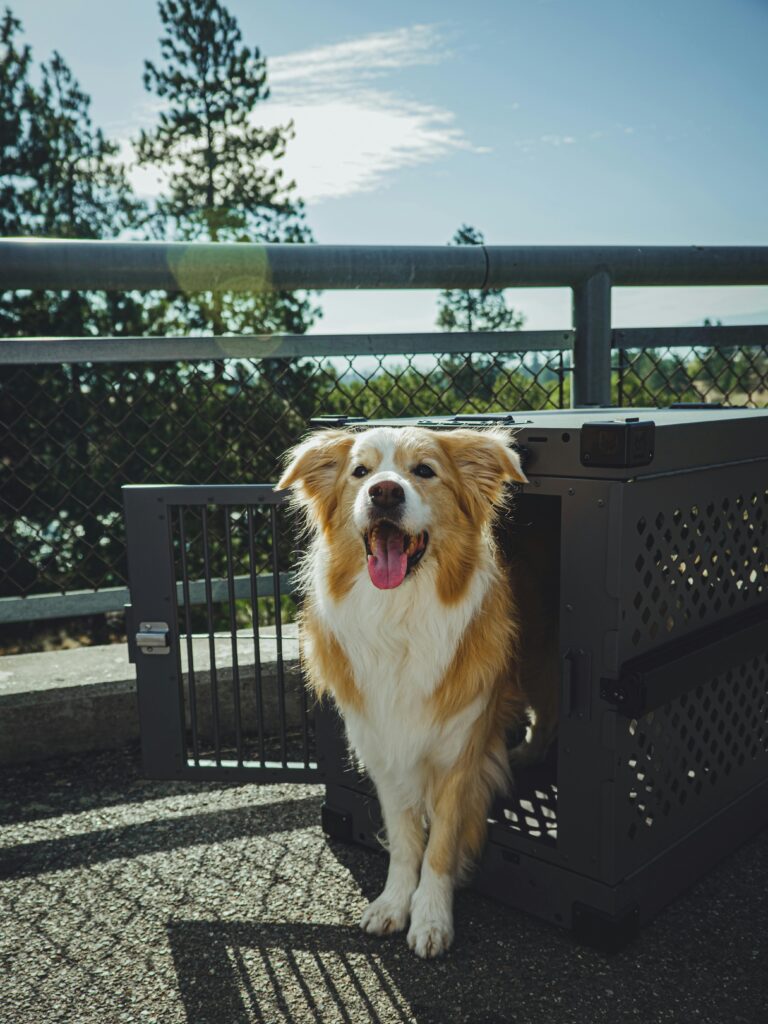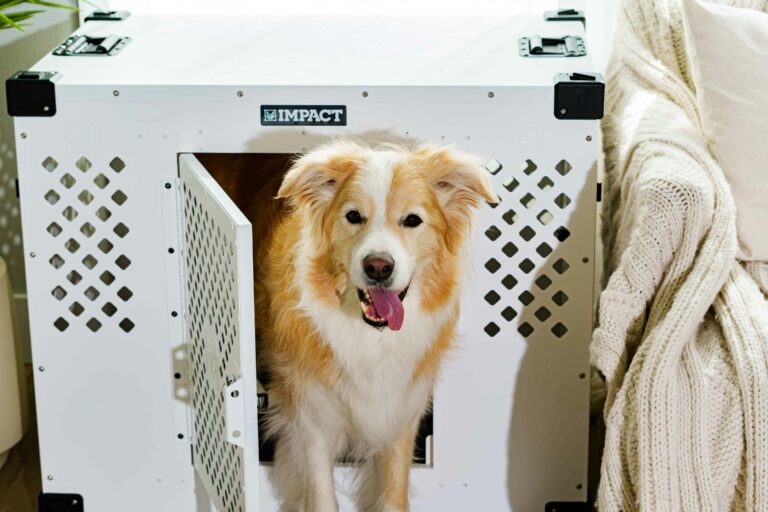Few training tools spark as much debate as the dog crate. Some owners see crates as restrictive, while others swear by them as essential to house training and overall obedience. The truth lies in how crates are introduced and used. When done correctly, crate training is not punishment. Instead, it’s one of the most effective ways to give your dog security, routine, and independence.
As a professional trainer in Springfield, I’ve worked with countless families who were hesitant to crate their dogs, only to find that their pups grew calmer, cleaner, and more confident once the crate became part of their lives.

Why Crate Training Works
Dogs are den animals by nature. In the wild, they seek small, safe spaces where they can rest without stress. A properly sized crate mimics that den instinct, offering your dog:
- Security: A quiet, predictable space they can retreat to
- Structure: Helps regulate sleep, feeding, and potty breaks
- House Training: Teaches bladder and bowel control
- Safety: Prevents destructive behavior when you’re away
- Independence: Encourages your dog to feel calm when alone
Far from being a punishment, crates provide freedom because a crate-trained dog can travel, visit friends, or stay at a boarding facility without anxiety.
1. Start With Positive Associations
The key to crate success is introducing it as something positive, never as a form of discipline.
Tips to create good associations:
- Feed meals in the crate with the door open
- Toss treats inside for your dog to discover
- Place a soft blanket or toy inside
- Reward calm behavior in and around the crate
Your goal is for your dog to view the crate as a safe, rewarding place, not a space they are forced into.
2. Use the Crate for Short, Positive Sessions
Begin with short crate intervals while you are at home. Gradually increase the duration as your dog relaxes.
- Start with 5–10 minutes at a time
- Pair the crate with chew toys or frozen KONGs
- Stay nearby at first, then step out of sight briefly
- Release your dog calmly, not with excitement
This teaches your dog that being in the crate is temporary and enjoyable.
3. Don’t Use the Crate as Punishment
Never send your dog to the crate because they misbehaved. This creates a negative association and can make them resistant to entering.
Instead, use commands like “kennel” or “crate” in a calm, neutral voice. Reward compliance every time, especially in the early stages.
4. Size and Placement Matter
A crate should be large enough for your dog to:
- Stand up
- Turn around comfortably
- Lie down stretched out
But it should not be so big that they can potty on one side and sleep on the other.
Place the crate in a quiet area, but not in total isolation. Dogs are social creatures, so keeping it in a family space like the living room helps them feel included.
5. Transition the Crate Into Everyday Life
Once your dog is comfortable, use the crate in real-world situations:
- Overnight sleeping to encourage house training
- Quiet time during busy household activities
- Safe travel in the car
- Downtime after walks or play
Consistency builds predictability, and predictability builds confidence.
For busy families, consistency can be tough. We recently shared tips on how to stay consistent with dog training even when life gets busy, which pair perfectly with crate routines.
6. Crate Training and Obedience Go Hand in Hand
Dogs that understand crate training often excel in obedience programs because they already grasp structure and boundaries. Our Basic Obedience Program uses these same principles to teach focus, calmness, and respect for commands, both in the home and in public settings.
7. Addressing Misconceptions
Many owners hesitate to use crates because they fear it is cruel. In reality:
- Dogs left to roam often develop destructive behaviors
- Crates prevent unsafe access to wires, trash, or toxic foods
- Proper crate training creates a calmer dog, not a distressed one
For more guidance, the PetMD guide on crate training puppies provides helpful tips for introducing your dog to their crate in a positive way.
Final Thoughts: The Crate as a Comfort Zone
When introduced correctly, the crate becomes a dog’s safe haven, not a punishment. It provides predictability in a world that can otherwise feel chaotic. For families in Springfield, especially those juggling work, kids, and busy schedules, crate training offers both peace of mind and a calmer, happier dog.
If your dog struggles with independence or house training, incorporating crate routines can be life-changing.
Ready to give your dog a safe, structured space to thrive? Contact us today to begin personalized crate training guidance.

